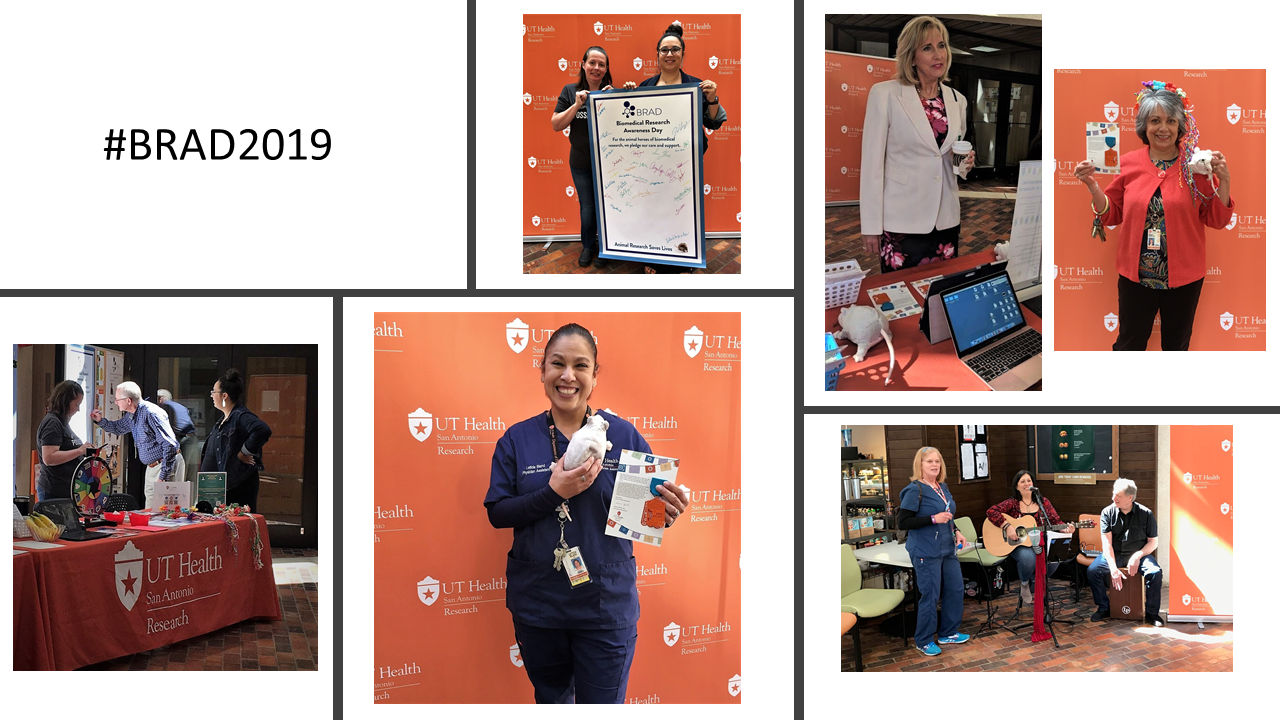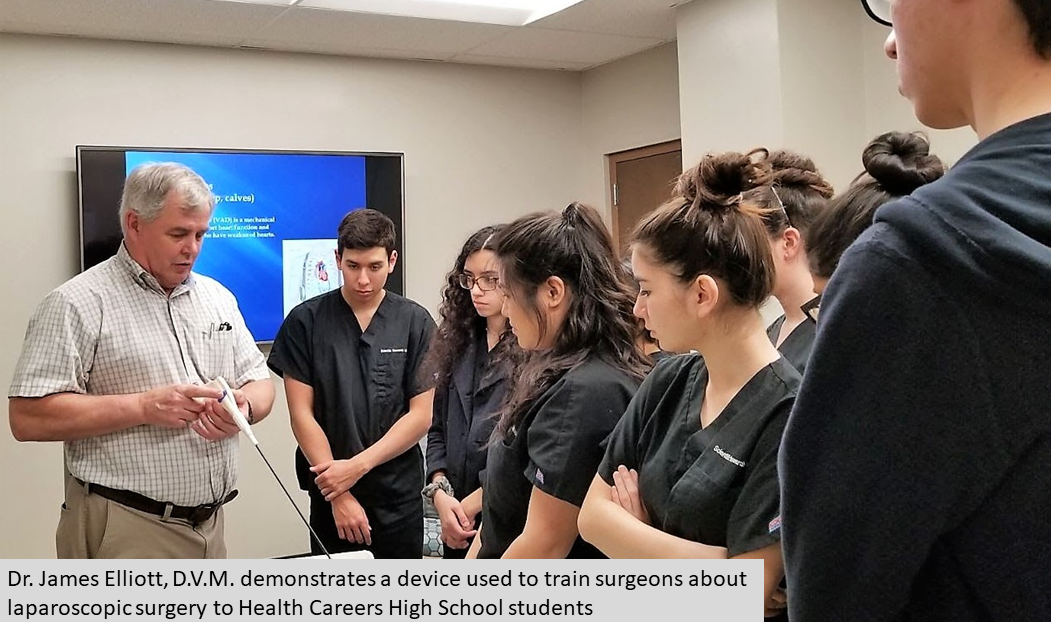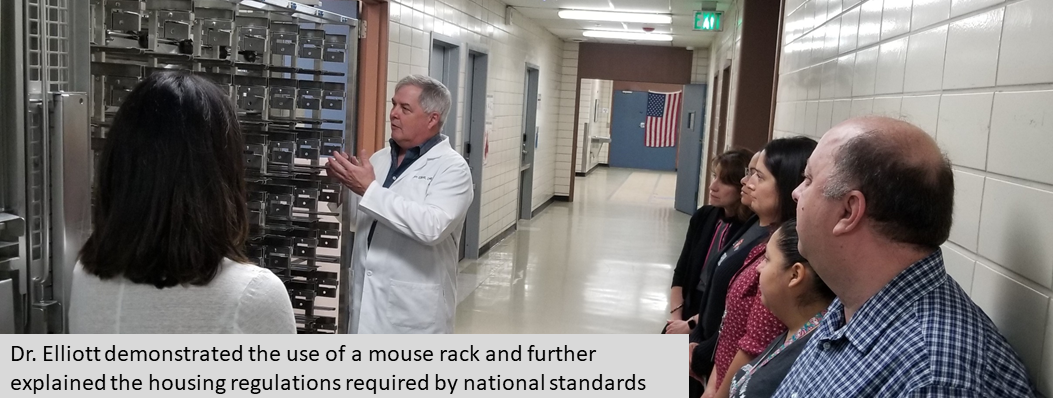Community Awareness on the Use of Animals in Biomedical Research
Contributor
July 10, 2019

Organized efforts to educate and increase awareness about the importance of animals in biomedical research continue across the campus and beyond.
Logan France, D.V.M., DACLAM, clinical veterinarian at Vanderbilt University Medical Center and daughter of pharmacology professor Charles France, Ph.D., continues to champion Biomedical Research Awareness Day (BRAD), a transformative initiative she founded in 2016. Under the auspices of Americans for Medical Progress, the goal of BRAD is to encourage academic institutions and veterinary schools to take the lead in creating dialogue and awareness in their communities on the importance and ethical use of animals in research. In three years, this global celebration held on the third Thursday of April has grown to include 200 participating institutions, including UT Health San Antonio.
Our celebration ranged from playing “animal Jeopardy!” to multiple educational activities and a live music performance by the multi-talented Lynda Schrack, who captured in her song the “3 Rs” of ethical research with animals: replace, reduce, and refine. This catchy, new tune is an original written by Ms. Schrack who works as a specialist in the Clinical Trials Office. Listen to the 30 second jingle here.

BRAD wrapped up with a visit from Health Careers High School students. UT Health veterinarian James Elliott, D.V.M. gave a hands-on demonstration of medical devices developed through animal research, including the EZ IO , an intraosseus vascular access used by emergency physicians and first responders for rapid fluid uptake. Examples like these help students develop a greater appreciation of why animals are needed by scientists to advance biomedical innovation and how these discoveries improve our lives.
Increasing education and awareness about animals in research is a year-round, strategic initiative of the VPR Office. In May, Dr. Elliott led employees on a guided tour of the animal facility in the Long School of Medicine to discuss daily activities in the Department of Laboratory Animal Resources (DLAR) and the care that animals receive from our staff veterinerians and animal technicians.

“The commitment to transparency and showcasing the gold standard of excellence our university upholds in animal care was a learning experience and it made me feel proud to be a part of this university and the VPR division,” said Michelle Mendoza, systems analyst in the VPR IT office who toured the facility.
National organizations including The Federation of American Societies for Experimental Biology (FASEB), the U.S. Department of Veterans Affairs (VA) and the National Academies of Sciences, Engineering, and Medicine (NASEM) are partnering to develop webinars on animals in research. In response to national pressure to discontinue the use of canines in research, these webinars are designed to encourage a dialogue about how important dogs are in developing new treatments. Since dogs are exposed to many of the same risk factors and suffer from many of the same diseases and injuries as humans, they are valuable models in areas such as heart disease, spinal cord injury, and infectious diseases. You can view the webinars from FASEB here and from NASEM here to learn more about the care dogs are given by scientists, veterinarians, and animal care specialists.
